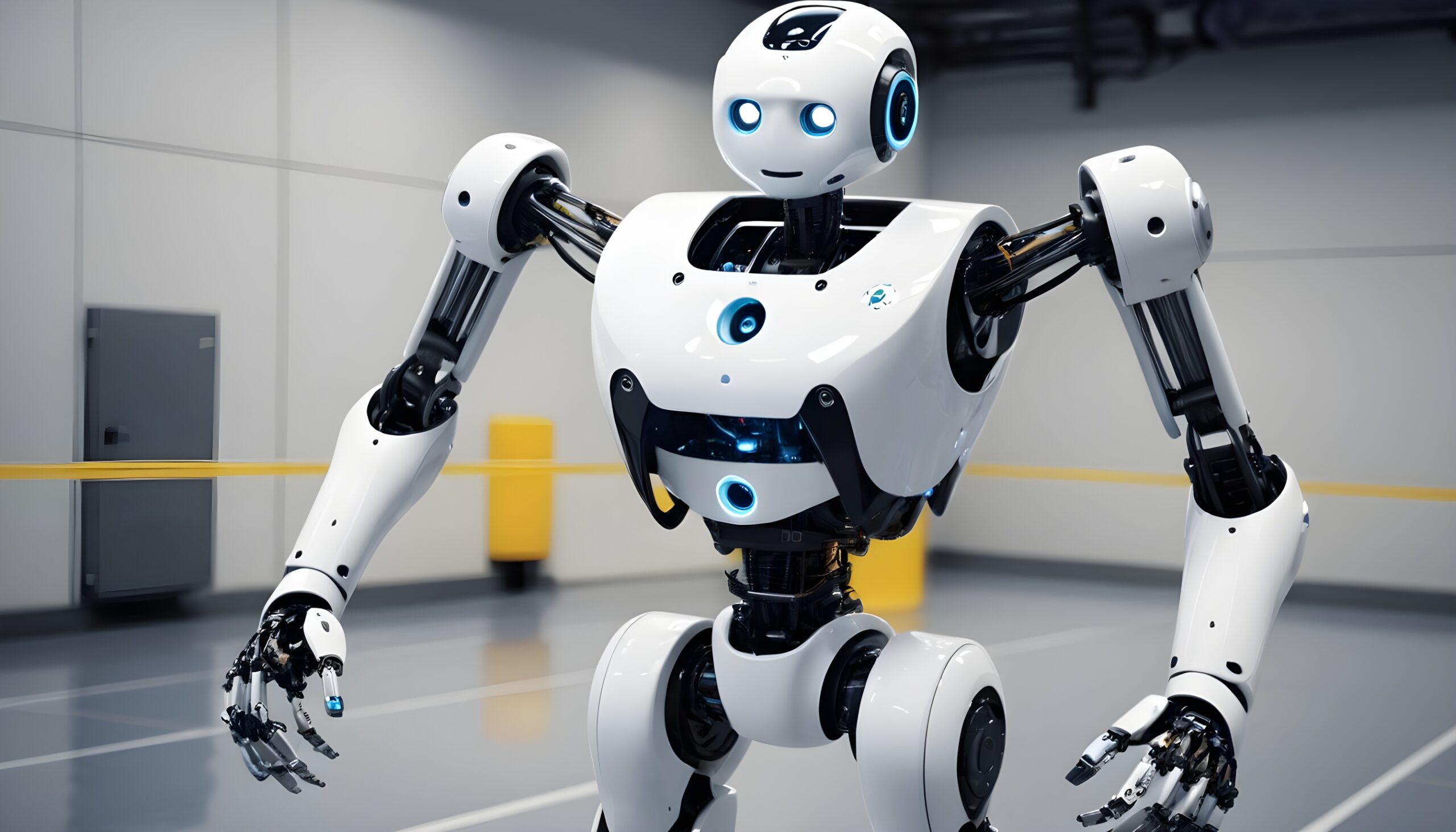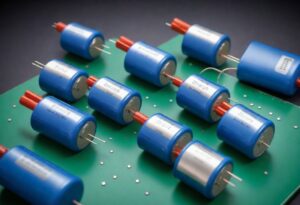In the contemporary landscape of industry and manufacturing, the integration of robotics has emerged as a pivotal force, ushering in a new era of automation, efficiency, and innovation. From automotive assembly lines to electronics manufacturing and logistics operations, robots have become indispensable tools for streamlining processes, enhancing productivity, and ensuring consistent product quality. This article aims to provide a comprehensive exploration of the role of robotics in automating manufacturing processes, improving efficiency, and enhancing product quality, supplemented by in-depth case studies showcasing successful implementations across various industries.
At the core of the modern manufacturing landscape lies the relentless pursuit of efficiency and productivity. With increasing global competition and evolving consumer demands, manufacturers are under constant pressure to optimize their production processes and deliver high-quality products in a timely manner. In this context, robotics has emerged as a game-changing technology, offering a wide range of capabilities that are revolutionizing the way goods are produced, assembled, and delivered.
One of the key advantages of robotics in manufacturing is its ability to automate repetitive and labor-intensive tasks, freeing up human workers to focus on more complex and value-added activities. In industries such as automotive manufacturing, robots are used extensively for tasks such as welding, painting, and assembly, where precision and consistency are paramount. By leveraging robotic automation, manufacturers can achieve significant improvements in efficiency, throughput, and cost-effectiveness, while also reducing the risk of errors and defects.
In addition to automation, robotics offers unparalleled flexibility and adaptability, enabling manufacturers to quickly reconfigure production lines and adapt to changing market conditions. This flexibility is particularly valuable in industries with short product life cycles and high demand variability, where traditional manufacturing methods may struggle to keep pace with evolving consumer preferences. With advanced robotic systems equipped with sensors, vision systems, and AI algorithms, manufacturers can dynamically adjust production processes in real-time, optimizing performance and responsiveness to market demands.
Furthermore, robotics has also revolutionized the field of logistics and supply chain management, offering new opportunities for efficiency and optimization. Automated guided vehicles (AGVs) and autonomous mobile robots (AMRs) are increasingly being deployed in warehouses and distribution centers to automate material handling tasks such as picking, packing, and palletizing. By integrating robotics into their logistics operations, companies can reduce labor costs, improve inventory accuracy, and enhance order fulfillment speed, thereby gaining a competitive edge in today’s fast-paced market.
Rbotics has emerged as a transformative force in modern manufacturing, offering unparalleled opportunities for automation, efficiency, and innovation. By embracing robotics technology, manufacturers can streamline their operations, improve product quality, and gain a competitive edge in today’s dynamic marketplace. As we continue to witness advancements in robotics and automation, the possibilities for revolutionizing manufacturing processes are virtually limitless, promising a future of increased productivity, agility, and sustainability.
To illustrate the transformative impact of robotic automation, let us consider a few case studies from different industries.
Automating Manufacturing Processes with Robotics:
In the realm of modern manufacturing, robotics stands as a pivotal force reshaping traditional paradigms and ushering in an era of unprecedented efficiency and productivity. From the simplest repetitive tasks to intricate assembly operations, industrial robots equipped with cutting-edge technologies have emerged as indispensable assets, revolutionizing the way products are made across diverse industries.
At the heart of this transformation lies the ability of robots to execute tasks with unparalleled speed, precision, and consistency, surpassing the capabilities of human labor. Equipped with advanced sensors, actuators, and sophisticated control systems, these machines excel in streamlining production processes, reducing costs, and enhancing overall quality.
By assuming the burden of repetitive and labor-intensive tasks, robots liberate human workers to focus on more complex and value-added activities. This shift not only optimizes resource allocation but also fosters an environment conducive to innovation, problem-solving, and skill development among the workforce.
The automotive industry serves as a prime example of how robotics has become an integral part of manufacturing operations. Within automotive assembly plants, robots proficiently weld components, assemble intricate parts, and perform a myriad of other tasks with unmatched efficiency. This integration of automation not only accelerates production cycles but also ensures consistent quality and precision, critical factors in an industry driven by stringent standards and fierce competition.
Yet, the impact of robotics extends far beyond automotive manufacturing, permeating various sectors ranging from electronics to consumer goods. In electronics assembly, robots delicately handle tiny components, solder connections, and conduct intricate tests with utmost accuracy, ensuring the reliability and performance of electronic devices. Similarly, in the food and beverage industry, robots streamline packaging processes, enhancing efficiency while maintaining hygiene standards.
One of the most remarkable aspects of robotic automation is its adaptability to diverse manufacturing environments and production requirements. Whether it’s operating on high-speed production lines churning out thousands of units per hour or facilitating small-batch production runs with frequent changeovers, robots demonstrate remarkable versatility and agility.
In recent years, the emergence of collaborative robots, or cobots, has further expanded the scope of automation by enabling close interaction between humans and machines in shared workspaces. Equipped with advanced safety features such as force-limiting technology and motion detection, cobots can work alongside human operators without the need for protective barriers, fostering a new era of human-robot collaboration.
The proliferation of robotics in manufacturing is not merely a technological advancement but a strategic imperative for companies seeking to remain competitive in an increasingly globalized marketplace. Beyond the immediate gains in efficiency and productivity, automation offers long-term benefits such as enhanced product quality, scalability, and agility in responding to market demands.
However, the integration of robotics into manufacturing processes also poses challenges, ranging from initial investment costs and technical complexities to workforce reskilling and job displacement concerns. Addressing these challenges requires a holistic approach that combines technological innovation with workforce development initiatives and proactive policies aimed at ensuring a smooth transition towards the future of manufacturing.
Robotics represents a transformative force in automating manufacturing processes, unlocking new levels of efficiency, flexibility, and competitiveness. As industries continue to embrace automation, the symbiotic relationship between humans and robots will redefine the dynamics of manufacturing, paving the way for a future where innovation thrives and productivity soars.
Electronics Manufacturing Processes with Robotics:
In the realm of electronics manufacturing, the integration of robotics has revolutionized assembly processes, offering unparalleled precision, efficiency, and quality control. As consumer demand for electronic devices continues to soar, companies are increasingly turning to robotic solutions to streamline production and stay ahead in a fiercely competitive market.
One such example is a consumer electronics company that has embraced robotic soldering and inspection systems within its assembly process. By leveraging advanced robotics technology, this company has unlocked a myriad of benefits, ranging from accelerated production cycles to enhanced product quality and yields.
Robotic soldering systems have emerged as a game-changer in electronics assembly, offering precise control over soldering parameters and eliminating variability associated with manual soldering techniques. Equipped with sophisticated vision systems and robotic arms, these systems can accurately place components and apply solder with micron-level precision, ensuring robust and reliable connections across circuit boards.
In the context of our consumer electronics company, the adoption of robotic soldering systems has led to significant improvements in production efficiency and consistency. By automating the soldering process, the company has reduced cycle times and minimized the risk of defects, thereby boosting overall yields and throughput.
Moreover, the integration of robotics enables the company to achieve tighter tolerances and maintain consistent quality standards across its product range. Unlike human operators, robots perform tasks with unwavering precision, eliminating variability and ensuring uniformity in solder joints and assembly processes. This level of consistency is crucial in industries where product reliability and performance are paramount, instilling confidence in customers and safeguarding brand reputation.
In addition to soldering, robotic inspection systems play a crucial role in ensuring product quality and reliability. Equipped with advanced imaging technology and artificial intelligence algorithms, these systems can detect defects, anomalies, and inconsistencies with unparalleled accuracy and speed.
For our consumer electronics company, robotic inspection systems serve as a critical quality control measure, enabling real-time monitoring of production processes and rapid identification of potential issues. By automating inspection tasks, the company can detect defects early in the assembly process, minimizing rework, scrap, and costly warranty claims downstream.
Furthermore, the data collected by robotic inspection systems can provide valuable insights into manufacturing performance and process optimization. By analyzing defect patterns and production metrics, the company can identify areas for improvement, fine-tune manufacturing processes, and drive continuous quality enhancement initiatives.
Te adoption of robotic soldering and inspection systems represents a strategic investment for our consumer electronics company, enabling faster production cycles, higher yields, and consistent quality across its product range. By harnessing the power of robotics, the company not only enhances operational efficiency but also strengthens its competitive position in the dynamic and demanding electronics market. As technology continues to evolve, the synergy between robotics and electronics manufacturing will continue to drive innovation and propel the industry towards new heights of productivity and excellence.
Logistics and Warehousing Processes with Robotics:
In the landscape of logistics and warehousing, the integration of robotics has emerged as a transformative force, reshaping traditional processes and propelling operations towards unprecedented levels of efficiency and productivity. One notable example is a major online retailer that has embraced robotic automation by deploying a fleet of Automated Guided Vehicles (AGVs) within its warehouse facilities. This strategic adoption of robotics has revolutionized order picking and fulfillment processes, yielding a multitude of benefits ranging from enhanced speed and accuracy to improved customer satisfaction and retention.
The implementation of AGVs within the warehouse environment marks a significant departure from conventional manual methods of order fulfillment. These autonomous vehicles are equipped with advanced navigation systems, sensors, and robotic arms, allowing them to navigate through the warehouse autonomously, retrieve items from designated storage locations, and transport them to the packaging area with precision and efficiency.
For our major online retailer, the deployment of AGVs represents a strategic investment aimed at addressing the challenges associated with a rapidly growing volume of orders and increasing customer expectations for fast and reliable delivery. By automating order picking and fulfillment processes, the company can significantly reduce order processing times, streamline operations, and improve overall throughput.
Moreover, robotic automation enhances the accuracy of order fulfillment, minimizing errors and reducing the likelihood of shipping discrepancies. AGVs are programmed to execute tasks with a high degree of precision, ensuring that the right products are picked, packed, and shipped to customers with utmost accuracy. This level of accuracy is crucial in the e-commerce industry, where order accuracy directly impacts customer satisfaction and retention.
In addition to speed and accuracy, robotic automation offers scalability and flexibility, allowing the company to adapt to fluctuating demand patterns and seasonal peaks without compromising on performance. Unlike human labor, AGVs can operate 24/7 without fatigue, enabling the company to handle surges in order volume efficiently and effectively.
Furthermore, the integration of robotics enhances workplace safety by reducing the reliance on manual labor for repetitive and physically demanding tasks. By automating material handling processes, AGVs minimize the risk of accidents and injuries associated with manual lifting, carrying, and transporting heavy loads within the warehouse environment.
From a strategic standpoint, the deployment of robotic automation strengthens the company’s competitive position in the fiercely competitive e-commerce market. By optimizing order fulfillment processes, improving customer satisfaction, and enhancing operational efficiency, the company can differentiate itself from competitors and drive growth and profitability in the long term.
Te integration of robotics into logistics and warehousing processes represents a paradigm shift in the way businesses manage and optimize their supply chain operations. For our major online retailer, the deployment of AGVs has unlocked new levels of efficiency, accuracy, and scalability, enabling the company to meet the evolving needs and expectations of its customers while maintaining a competitive edge in the digital marketplace. As technology continues to evolve, the synergy between robotics and logistics will continue to drive innovation and shape the future of warehousing and distribution.
Improving Efficiency through Robotics Integration:
Integrating robotics into manufacturing processes has become increasingly common as companies seek to enhance efficiency and productivity. Leveraging the precision, speed, and automation capabilities of robots, businesses can streamline operations, optimize resource allocation, and improve overall workflow efficiency. Here are some key ways in which robotics integration drives efficiency in manufacturing:
Precision and Accuracy:
One of the most significant advantages of robotics in manufacturing is their ability to perform tasks with exceptional precision and accuracy. Whether it’s welding components, assembling intricate parts, or conducting quality inspections, robots execute operations with tight tolerances, resulting in higher-quality products and reduced rework. By minimizing variability and ensuring consistency in production processes, robots contribute to improved product quality and customer satisfaction.
Speed and Throughput:
Robots are designed to operate at high speeds, significantly reducing cycle times and increasing production throughput. With their ability to perform repetitive tasks quickly and consistently, robots can ramp up production rates and meet tight deadlines more efficiently than manual labor. This increased speed not only boosts productivity but also enables companies to respond rapidly to changing market demands and customer requirements, thereby maintaining a competitive edge in the industry.
Continuous Operation:
Unlike human workers who require breaks and rest periods, robots can operate continuously, 24/7, without fatigue. This uninterrupted production capability maximizes uptime and minimizes downtime, leading to higher overall equipment effectiveness (OEE) and increased output. By eliminating the need for shift changes and downtime associated with human fatigue, companies can optimize production schedules and achieve greater efficiency in manufacturing operations.
Task Automation:
Robots excel at automating repetitive, monotonous tasks that are prone to human error. By taking over these routine operations, robots free up human workers to focus on more complex tasks that require creativity, problem-solving, and critical thinking. This not only improves the efficiency of individual workers but also enhances overall workflow efficiency by leveraging human skills where they are most valuable. Moreover, automation reduces the risk of errors and defects, leading to higher levels of product consistency and quality.
Resource Optimization:
Robotics integration allows for optimal resource allocation, including labor, materials, and equipment. By automating resource-intensive tasks and streamlining workflows, companies can minimize waste, reduce costs, and improve resource utilization. With robots handling repetitive and labor-intensive operations, human workers can be deployed in roles that add greater value to the manufacturing process, such as process optimization, innovation, and customer service. This optimization of resources contributes to overall efficiency and profitability in manufacturing operations.
Flexibility and Adaptability:
Modern robots are highly flexible and adaptable, capable of performing a wide range of tasks across different manufacturing processes and applications. With the use of advanced programming and control systems, robots can be reconfigured and repurposed quickly to accommodate changes in production requirements or product variations. This agility enables companies to respond swiftly to market trends, customer preferences, and supply chain disruptions, ensuring continuity and resilience in manufacturing operations.
Improved Safety:
Robotics integration enhances workplace safety by reducing the risk of accidents and injuries associated with hazardous tasks. By assigning robots to handle dangerous or ergonomically challenging operations, companies can create a safer work environment for their employees while maintaining high levels of efficiency and productivity. Moreover, robots are equipped with advanced safety features such as collision detection, motion monitoring, and protective barriers, further minimizing the risk of workplace accidents and ensuring compliance with safety regulations.
Robotics integration offers numerous benefits for improving efficiency in manufacturing, including precision, speed, continuous operation, task automation, resource optimization, flexibility, and safety. By harnessing the power of robotics, companies can streamline their production processes, increase output, and stay competitive in today’s fast-paced manufacturing landscape. As technology continues to evolve, the role of robotics in driving efficiency and innovation in manufacturing will only continue to grow, shaping the future of the industry.
Enhancing Product Quality with Robotics:
In the pursuit of excellence in manufacturing, the integration of robotics has emerged as a powerful tool for enhancing product quality across various industries. Through precise execution, real-time defect detection, and advanced quality control measures, robotics plays a crucial role in minimizing errors, defects, and variability in manufacturing processes, thereby ensuring the delivery of high-quality products to customers. Here’s how robotics contributes to enhancing product quality:
Precision and Consistency:
Robots are renowned for their ability to perform tasks with unparalleled accuracy and consistency, surpassing the capabilities of human labor. Whether it’s welding components, assembling intricate parts, or conducting quality inspections, robots execute operations with tight tolerances, resulting in uniformity and repeatability in the production of goods. By minimizing variations in production processes, robotics contributes to the production of high-quality products that meet stringent standards and specifications.
Real-time Defect Detection:
Robots equipped with advanced sensors and vision systems can detect defects in real-time during the manufacturing process. These sensors can identify anomalies, irregularities, or deviations from quality standards, enabling immediate corrective actions to be taken. By intercepting and addressing defects at the source, robotics prevents defective products from reaching the market, thereby safeguarding customer satisfaction and protecting brand reputation. This proactive approach to quality control ensures that only products of the highest caliber are delivered to consumers, fostering trust and loyalty.
Advanced Quality Control Measures:
Robotics enables companies to implement sophisticated quality control measures, such as statistical process control (SPC) and Six Sigma methodologies, to monitor and improve manufacturing processes continuously. By collecting and analyzing data in real-time, robotics provides insights into process variability, trends, and potential areas for improvement. This data-driven approach to quality management empowers companies to identify and address root causes of defects, minimize rework, scrap, and warranty claims, and optimize production processes for enhanced efficiency and consistency.
Continuous Improvement:
With robotics integration, companies can embrace a culture of continuous improvement, driven by data-driven insights and proactive quality management strategies. By leveraging robotics for quality control and monitoring, companies can identify opportunities for optimization, streamline workflows, and implement corrective actions to enhance product quality and operational efficiency. This commitment to continuous improvement ensures that manufacturing processes evolve in alignment with changing market dynamics, customer expectations, and industry standards, ultimately driving sustained competitiveness and growth.
Robotics plays a pivotal role in enhancing product quality by minimizing errors, defects, and variability in manufacturing processes. Through precision execution, real-time defect detection, and advanced quality control measures, robotics enables companies to produce high-quality products that meet or exceed customer expectations. By embracing robotics as a key enabler of quality excellence, companies can safeguard brand reputation, foster customer loyalty, and drive long-term success in today’s competitive marketplace.
Case Studies of Successful Robotics Implementations:
In recent years, robotics has become increasingly integrated into various industries, revolutionizing operations, and driving efficiency. Through successful implementations, companies have witnessed remarkable transformations in productivity, quality, and competitiveness. Here are several compelling case studies showcasing the effectiveness of robotics in different sectors:
Automotive Manufacturing:
One of the most prominent examples of successful robotics implementation is in automotive manufacturing. Companies like Tesla, Ford, and Toyota have heavily invested in robotic automation to streamline production processes. Tesla’s Gigafactories, for instance, utilize a vast array of robots for tasks ranging from welding and painting to assembly. By leveraging robotics, these companies have achieved higher production rates, improved quality control, and reduced labor costs, ultimately enabling them to meet the growing demand for electric vehicles.
E-commerce Warehousing:
In the e-commerce sector, companies such as Amazon have revolutionized warehouse operations through the deployment of robotic systems. Amazon’s fulfillment centers utilize thousands of robotic units, known as Amazon Robotics, to automate tasks such as picking, packing, and sorting. These robots work collaboratively with human workers, navigating through aisles to retrieve and transport items with precision and efficiency. As a result, Amazon has significantly increased order fulfillment rates, reduced delivery times, and enhanced customer satisfaction.
Healthcare and Surgery:
Robotic technologies have also made significant strides in the healthcare industry, particularly in surgical procedures. The da Vinci Surgical System, developed by Intuitive Surgical, enables surgeons to perform minimally invasive surgeries with enhanced precision and control. By manipulating robotic arms equipped with surgical instruments and cameras, surgeons can access hard-to-reach areas and perform intricate procedures with greater accuracy and fewer complications. As a result, patients experience faster recovery times, reduced scarring, and improved clinical outcomes.
Agriculture and Farming:
In agriculture, robotics is revolutionizing traditional farming practices and addressing labor shortages. Companies like John Deere and Blue River Technology have developed autonomous agricultural robots equipped with advanced sensors and AI algorithms to perform tasks such as planting, spraying, and harvesting. These robots can navigate fields, identify crops, and apply treatments with precision, optimizing resource usage and maximizing yields. By embracing robotics, farmers can increase efficiency, reduce dependency on manual labor, and improve crop quality.
Food and Beverage Industry:
Robotic automation has also found applications in the food and beverage industry, particularly in food processing and packaging. Companies like Nestlé and PepsiCo utilize robotic systems for tasks such as palletizing, sorting, and inspecting products. These robots operate with speed and accuracy, ensuring consistent quality and compliance with food safety regulations. By automating repetitive tasks, companies can increase production efficiency, reduce waste, and maintain high standards of hygiene and sanitation.
In each of these case studies, the successful implementation of robotics has led to tangible benefits such as increased productivity, improved quality control, and enhanced competitiveness. By leveraging robotic technologies, companies across diverse industries have been able to overcome challenges, optimize processes, and achieve greater efficiency and profitability. As robotics continues to advance, the potential for transformative impact across industries will only continue to grow, paving the way for a future driven by automation and innovation.
Challenges and Considerations:
Despite the promising advantages robotics brings to manufacturing, a range of challenges and considerations must be navigated to harness its full potential. These challenges encompass financial, technical, and socio-economic aspects, necessitating careful planning and strategic approaches. Here are some key challenges and considerations associated with robotics integration in manufacturing:
High Initial Costs:
One of the primary challenges in adopting robotics is the significant upfront investment required. The acquisition and installation of robotic systems, along with associated infrastructure and programming, entail substantial capital expenditure. For small and medium-sized enterprises (SMEs) with limited financial resources, these costs can present a barrier to entry, delaying or inhibiting the adoption of robotics technology.
Integration Complexities:
Integrating robotics into existing manufacturing processes can be complex and challenging. Compatibility issues with existing equipment, software, and workflows may arise, requiring customization and optimization to ensure seamless integration. Moreover, deploying robotics often necessitates restructuring of production layouts and workflows, which may disrupt operations and require extensive planning and coordination.
Job Displacement and Workforce Retraining:
Concerns about job displacement and workforce retraining loom large in the context of robotics integration. As automation replaces certain manual tasks, there is apprehension about the potential loss of jobs and displacement of workers. To address this challenge, companies must invest in workforce development initiatives, such as training programs and skill enhancement opportunities, to equip employees with the necessary competencies for roles that complement robotic automation.
Safety and Human-Robot Interaction:
Ensuring the safety of human-robot interaction is paramount in manufacturing environments. Collaborative robots (cobots) working alongside human operators pose unique safety challenges, requiring stringent safety standards and risk assessment protocols to mitigate potential hazards. Safeguarding workers from injuries caused by collisions, entanglements, or malfunctions necessitates the implementation of robust safety measures, including protective barriers, emergency stop mechanisms, and safety sensors.
Ethical Considerations:
Ethical considerations surrounding the impact of automation on employment, income inequality, and societal well-being must be carefully addressed. The widespread adoption of robotics may exacerbate disparities in income and employment opportunities, particularly for low-skilled workers in sectors susceptible to automation. Companies, policymakers, and stakeholders must engage in dialogue to develop ethical frameworks and policies that promote equitable access to employment, fair labor practices, and social responsibility in the age of automation.
While robotics holds immense potential to transform manufacturing processes and drive efficiency, addressing the associated challenges and considerations is essential to realize its benefits sustainably. By proactively addressing financial barriers, technical complexities, workforce concerns, safety risks, and ethical considerations, companies can navigate the transition to robotics integration successfully. Through strategic planning, investment in workforce development, adherence to safety standards, and ethical decision-making, manufacturers can leverage robotics to enhance competitiveness, productivity, and innovation while fostering inclusive and sustainable growth.
Future Trends and Innovations:
As we look towards the future, the trajectory of robotics in manufacturing is poised for remarkable advancements, driven by innovations in artificial intelligence, machine learning, and cyber-physical systems. These developments are reshaping the landscape of manufacturing, ushering in a new era of automation, efficiency, and productivity. Here are some key future trends and innovations shaping the future of robotics in manufacturing:
Industry 4.0 Initiatives:
The advent of Industry 4.0 is transforming manufacturing processes through the integration of cyber-physical systems, the Internet of Things (IoT), and cloud computing. This convergence enables seamless connectivity and communication between machines, sensors, and data analytics platforms, facilitating real-time monitoring, analysis, and optimization of manufacturing operations. Robotics plays a central role in Industry 4.0 initiatives, powering smart factories with autonomous robots, collaborative systems, and adaptive manufacturing technologies.
Advanced Artificial Intelligence and Machine Learning:
Advancements in artificial intelligence (AI) and machine learning are driving innovation in robotics manufacturing. AI-powered robotics systems can learn from data, adapt to changing environments, and optimize performance over time. Machine learning algorithms enable robots to make autonomous decisions, predict maintenance needs, and optimize production schedules based on real-time data and feedback. These capabilities enhance efficiency, reliability, and adaptability in manufacturing processes, leading to improved productivity and quality.
Collaborative Robotics and Human-Robot Collaboration:
The rise of collaborative robotics (cobots) and human-robot collaboration technologies is revolutionizing the way humans and robots work together in shared environments. Unlike traditional industrial robots confined to safety cages, cobots are designed to operate safely alongside human workers, facilitating close collaboration and interaction. Advanced safety features such as force-limiting technology, proximity sensors, and adaptive control enable cobots to work collaboratively with humans, enhancing flexibility, adaptability, and responsiveness in manufacturing operations.
Autonomous Mobile Robots (AMRs):
Autonomous mobile robots (AMRs) are another emerging trend in robotics manufacturing, offering flexibility and mobility in navigating dynamic environments. AMRs are equipped with navigation systems, sensors, and AI algorithms that enable them to autonomously traverse factory floors, warehouses, and distribution centers. These robots can perform tasks such as material handling, inventory management, and order fulfillment with efficiency and precision, optimizing logistics operations and streamlining supply chain processes.
Additive Manufacturing and 3D Printing:
Additive manufacturing, also known as 3D printing, is revolutionizing production processes by enabling on-demand, customized manufacturing of complex parts and components. Robotics plays a crucial role in additive manufacturing, with robotic arms and automated systems used for material deposition, layer-by-layer construction, and post-processing tasks. By combining robotics with additive manufacturing technologies, manufacturers can achieve greater flexibility, efficiency, and innovation in product design and production.
The future of robotics in manufacturing holds immense promise, driven by advancements in artificial intelligence, machine learning, and cyber-physical systems. Industry 4.0 initiatives, collaborative robotics, autonomous mobile robots, and additive manufacturing are among the key trends and innovations shaping the future of manufacturing. By embracing these technologies and leveraging the power of robotics, manufacturers can unlock new levels of automation, efficiency, and productivity, positioning themselves for success in the rapidly evolving global marketplace.
In conclusion, robotics continues to revolutionize industry and manufacturing, offering unparalleled opportunities for automation, efficiency enhancement, and quality improvement. Through the integration of robotics into manufacturing processes, companies can achieve higher levels of productivity, competitiveness, and innovation.
By leveraging robotics technologies effectively, manufacturers can address the challenges of modern production environments, adapt to changing market dynamics, and meet the evolving needs of customers. As technology continues to advance and robotics capabilities evolve, the role of robotics in shaping the future of industry and manufacturing is poised to expand, driving further innovation and progress in the years to come.










More Stories
Securing the Cyberspace: DDoS Attacks and Botnets
Securing the Connected: Cybersecurity Strategies for IoT
Exploring the Advancements and Applications of Supercapacitor